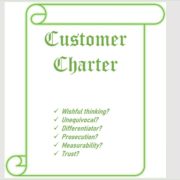The Why, What and How of Stakeholder Mapping
We’re delighted to include this guest blog from our friend an associate Paul Laughlin.
Do you have a stakeholder map? Is it up-to-date and do you use it?
Those questions frequently come up when I’m working with clients. In either training or coaching, the need to ‘know your stakeholders‘ is a common one.
It’s not surprising that it matters. Today’s businesses are more complex than ever and it’s not enough just to generate insights – you need to be able to act on them. Few, if any, of today’s leaders can do that in isolation.
Whether you need to partner with IT, Sales, Marketing or Operations you will need to cooperate. The challenge, of course, is that other people have their own priorities, challenges & values. These may not accord with yours, or may at least make your intended action less important now.
Creating a stakeholder map: step 1
The first challenge, when seeking to manage your stakeholders better, is to identify them. This might sound patently obvious, but I often see too little time spent on this stage.
We will easily recall others that we work with often. But, one of the benefits of a well designed stakeholder map is having taken the time to spot others.
So, I suggest taking some time to think. Use mind-mapping techniques to identify a 360 degree view of your all your stakeholders. To get you started, consider the following possible direct relationships:
- Whose investment/permission do you need, to proceed?
- Whose process approval do you need, to comply?
- Whose resources do you need to deliver change/action?
- Whose engagement do you need, to do the work?
- Whose expectations do you need to meet, to succeed?
- Whose cooperation do you need, in order for it to work?
- Who thinks they are affected (but aren’t) & needs reassurance?
In other words, consider your: sponsors; gatekeepers; suppliers; team; clients; peers and others who may be worried.
Once you have identified these immediate relationships, then think about who they need. Can you identify their line manager, internal suppliers, teams, peers etc?
Some simple examples, of different visualisation techniques for this stage, are available from the Stakeholdermap site.
My advice is to work on this a little longer then you want to. It’s surprising how often, towards the end, you identify a team or leader you had not considered.
Creating a stakeholder map: step 2
The output of step 1 may look unwieldy, even if you have produced a beautiful ‘spiders web‘ on flip-charts. That is because it is. Of itself, the above exercise has identified too many stakeholders for you to viably manage.
The point of step 1 is not to create your priority list, but first to think broadly enough so you’re not stuck on ‘the usual suspects’. Step 2 is all about prioritisation. Anyone who has worked on project/change management will be familiar with the Boston Consulting Grid (BCG). This works on a similar representation.
To prioritise the stakeholder identified in step 1, you need to assess each one against two dimensions:
- How much influence do they have?
- How interested are they?
The first question is all about their impact on what you are seeking to achieve. Let’s say you have produced a targeting model for a marketing campaign. Perhaps all your testing has proven (to you) that it is much more accurate than the current approach used by Sales & Marketing teams. In this context, question one means who has the authority to decide if new targeting is implemented?
One caution here is to consider different types of power. It’s easy to identify those who are more senior in the organisation. Also look for those with significant influence over others or recognised expertise. Score highly all those who have high influence over decision to use new model.
The second question (above), concerns engagement. Frankly, are they bothered? You should score highly those who are very interested (either as advocates or detractors). Also consider stakeholders who have significant ‘skin in the game‘. Those you know will be interested once they understand the impact on them.
Once you have relatively scored every stakeholder (from high to low on both axes), you can plot them. This is where the exercise looks like a BCG. Plot the relative position of each of your stakeholders identified in step 1 on a 2×2 grid of the above axes.
In classic BCG fashion, the ideal quadrant should by top right. That is the stakeholder with high influence & high interest. But, be ruthless. Don’t just keep stakeholders near that top right because you like them or usually work with them. Take a hard look at relative scores – because you need to prioritise down to those who need to be managed.
A tidy visual explanation of this technique is published by Karim Vaes.
Using a Stakeholder Map: what next?
Hopefully, you have seen above the benefit of identifying your stakeholders & prioritising those who matter most. Such a stakeholder map (output from step 2), can help you priorities your limited time.
My field is Analytics, and every insight or analytics leader I meet is busy. They often refer to things like ‘not enough hours in the day‘. So, personal effectiveness and productivity should matter to such technical leaders too. This mapping exercise is all about helping you be more productive.
Over this month we will share a number of ways to better manage stakeholders. But, each takes time. The way to avoid burnout and stay sane is to focus your efforts. Be disciplined in who you spend time with and how you communicate.
This is how you should treat the different quadrants of your map:
Key Players (Top Right)
This is where to really focus your efforts. Get to know these stakeholders, what they are like, what matters to them. What is there preferred way to be briefed (face to face, call, email summary etc)? Plan in time to proactively ensure they understand your proposal and keep them informed in a way that works for them. Clearly communicate what is in it for them.
Keep Satisfied (Top Left)
These are your next priority group. They have the influence to make or break your plans, but less/little interest. The key here is to be brief. Ensure you summarise down to the least they need to know to reassure them. Your time is likely to be taken crafting pithy updates or influencing their trusted advisors/teams.
Keep Informed (Bottom Right)
These are less important than the two groups above, but are interested. Here the key is to minimise the time you take keeping them informed. Most of your stakeholders should be below the central horizontal axis, so are in this or the next group. Given such volume, although this group matter, they can be a time drain. How can you automate reports, or brief them through existing meetings?
Minimal Effort (Bottom Left)
These are the least important stakeholders. Step 2 should have placed the largest number of stakeholders identified in step 1 in this quadrant. Here you want to be reactive if possible & protect yourself from any unneccessary effort. Avoid offending anyone, but see if you can just answer their questions through existing means or as they arise.
Stakeholder Map: what works for you?
Mapping your stakeholders is a great place to start in the way you influence colleagues and key clients. If you don’t have a map, or the one you have doesn’t work for current situation, then create a new one.
What works for you? Do you have any other tools you use? How do you map stakeholders and keep the most important ones in view?
- Getting Agile really working outside of IT requires culture change - February 13, 2020
- The need for analysts to have improved commercial awareness - January 8, 2020
- Don’t Neglect the Political Dimension of Applying Analytics or Insight - May 17, 2019





